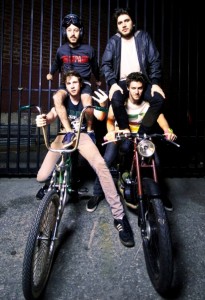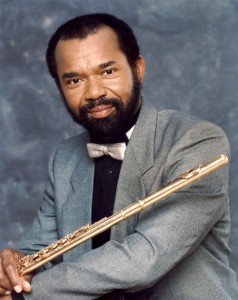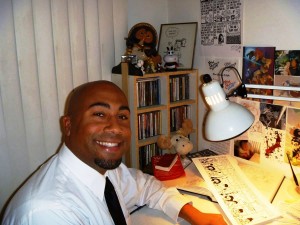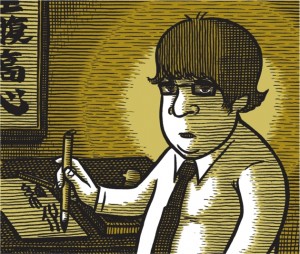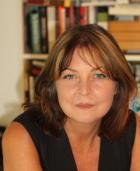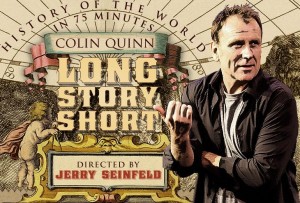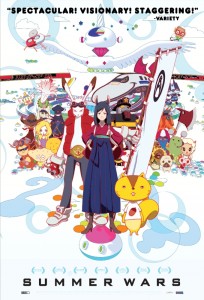Justin’s Japan: Anamanaguchi, Peelander-Z, Starscream to Rock NYC
By JQ magazine’s Justin Tedaldi (CIR Kobe-shi, 2001-02) for Examiner.com. Visit his NY Japanese Culture page here to subscribe for free alerts on newly published stories.
If you’re looking for new music from New York bands to kick off the new year, your search ends here. This Friday (Jan. 14), The Studio at Webster Hall will host a concert headlined by Anamanaguchi with support by Peelander-Z and Starscream.
If Anamanaguchi’s name is unfamiliar, their sound will whisk you back to the 1980s glory days of the Nintendo Entertainment System. As perhaps the biggest artists of the chiptune genre, the Brooklyn-based foursome tosses punk-flavored electric guitar, bass and drums on top of pop bloops and beeps from a hacked NES and Game Boy that yields retro-futuristic results on disc and onstage. Last year, the group composed the songs for the video game soundtrack based on the film Scott Pilgrim vs. the World, and in November they held a free concert in Union Square to support the controversial alcoholic energy drink Four Loko.
Click here for the rest of the article.
Justin’s Japan: Interview with NEA Jazz Master Hubert Laws
By JQ magazine’s Justin Tedaldi (CIR Kobe-shi, 2001-02) for Examiner.com. Visit his NY Japanese Culture page here to subscribe for free alerts on newly published stories.
With a career in music that began in the 1960s, Grammy-nominated flautist Hubert Laws’ latest honor is the NEA Jazz Master Award, which since 1982 is the highest prize the U.S. bestows upon living jazz musicians.
Laws will appear at a free panel discussion with the other 2011 NEA Jazz Masters at New York’s Jazz at Lincoln Center on Jan. 10. (Doors open at 12:45 p.m., and a live video stream can be seen here.) The following night, he will perform at the annual NEA Jazz Masters Awards Ceremony and Concert. For those who can’t attend the sold out show, there will be a live video stream on the NEA website along with a simulcast on the Newark-based WBGO Jazz 88.3 FM and their site, and Sirius/XM Satellite Radio’s Real Jazz Channel 70.
This year also marks the artist’s 40th anniversary of his first trip to Japan. I spoke with him about his time there along with some of his other personal highlights as a musician.
Congratulations on your NEA Jazz Master award. How does it feel to receive this honor?
After learning of its significance, it is a humbling experience to be named among other respected artists of special accomplishment.
How did you find out that you won his award? Did you or anyone else campaign for it?
I happened to be on a tennis court playing doubles when my cell phone rang during a changeover. The gentleman asked if I had a moment—I said, “About 90 seconds.” When he announced the award, I said, “I think my partners will wait a little while longer.” I was not aware of this award, so could not “campaign” for it.
Tell us about your history playing in Japan and working with Japanese artists as a musician.
My first tour in Japan began in Tokyo in 1971 with the “CTI All-Stars” [Freddie Hubbard, Stanley Turrentine, George Benson, Grover Washington, Ron Carter, Bob James, Ester Philips, Hank Crawford and others].
We were greeted at Narita Airport by fans with banners and fanfare as though we were rock stars. That tour included several cities for about two weeks. Since then, 15 other trips there included my own group at the Blue Note Club, another with Ron Carter and his group, Chick Corea and his group, and Sonny Rollins with the Yomiuri Symphony Orchestra, where I premiered the Concertino for Flute and Orchestra by Harold Blanchard. This performance can be seen on the 30 Year Retrospective DVD; and excerpts can be seen on my website. The Laws family [Ronnie, Debra, Eloise and Hubert] appeared at the Cotton Club there in 2007. A JVC Jazz Festival was held there. where Eloise and I appeared there along with Nancy Wilson and others.
My most recent CD features Japanese child prodigy and pianist/keyboardist Yayoi Yoshida in flute adaptations of classical compositions: Rachmaninov’s Piano Concerto #2 and Samuel Barbers’ Adagio for Strings. Excerpts also can be heard on my site.
Why do you think the Japanese enjoy jazz so much?
As a culture, it appears that the Japanese gravitate heavily toward education. This value seemingly leads to appreciation of substance. There is great “substance” in the art of improvised music commonly known as “Jazz.” As in any culture, the “foreign mystique” may also play a part. “A prophet is not unhonored except in his home territory and in his own house.” –Matthew 13:57, New World Translation of Holy Bible.
Click here for the rest of the interview.
Justin’s Japan: Interview with NEA Jazz Master David Liebman

2011 NEA Jazz Master Dave Liebman. (Marek Lazarski, courtesy of the National Endowment for the Arts)
By JQ magazine’s Justin Tedaldi (CIR Kobe-shi, 2001-02) for Examiner.com. Visit his NY Japanese Culture page here to subscribe for free alerts on newly published stories.
Brooklyn-born saxophonist and flautist Dave Liebman is one of this year’s recipients of the NEA Jazz Master Award, which since 1982 is the highest honor the United States bestows upon living jazz musicians. Liebman is best known for his work with the legendary trumpeter Miles Davis, joining his band in 1973 for a 16-month stint and playing on two studio albums, the final ones that Davis would record for the rest of the decade, as well as several live bootleg concerts that are available.
Liebman will appear at a free panel discussion with the other 2011 NEA Jazz Mastersat New York’s Jazz at Lincoln Centeron Jan. 10. (Doors open at 12:45 p.m.)The following night, he will perform at the annual NEA Jazz Masters Awards Ceremony and Concert. For those who can’t attend the sold out show, therewill be a live broadcast on the Newark-based WBGO Jazz 88.3 FM and their website, and Sirius/XM Satellite Radio’s Real Jazz Channel 70. I spoke with the artist about his thoughts on winning this award, his history in Japan, and his intriguing relationship with Miles.
How is one picked to be an NEA Jazz Master?
This is a very good question, which I hope to find out at the ceremony [laughs]…I think past inductees are a part of it—I have no idea. I can’t wait to know, assuming they will tell me the process.
Did you have to campaign for it?
Absolutely not; this was a phone call that came out of nowhere. I think my boss at the Manhattan School of Music, Justin DiCioccio, said he recommended [me], but the truth is, if you go to the site right now, you can put yourself in…the public is free to nominate anybody on the website. So that’s all I know about the process. How it goes from there to deciding [the inductees], I don’t really know, and I’m curious to find out.
You’ve played with Japanese artists and appeared on their albums since the early ’70s. How did that come about, and what were your impressions from visiting Japan through the years?
Of course, I had a lot of action in the ’70s and into the ’80s, but not so much in the last 10 to 15 years. First of all, the Japanese audience at that time was fantastic, and of course Miles Davis was a gigantic hero. The fact that I was with Miles put me right away into a special arena, and sure enough as soon as I got there I recorded. When I was on my first tour with Miles in Japan—it was the only time I went with Miles to Japan—I recorded my first record as a leader [First Visit, with Jack DeJohnette, Richie Beirach and Dave Holland], because Stan Getz’s group was there and the rhythm section was ready to go. I recorded with Abbey Lincoln also that week. In those days, when you went to Japan somehow you ended up with record dates. They were very, very enthusiastic, and business was good.
And then I had, of course, a long-term relationship with Terumasa Hino, the trumpet player, and drummer Motohiko, his brother who passed away a few years ago. I worked many times with the Hinos in Japan at a lot of festivals. Most notably there were two big concerts that I did in the ’80s—one for John Coltrane with Wayne Shorter and then in the ’90s with Michael Brecker, again for Trane ten years later. But as I said, not so much in the last ten to fifteen years. It was fascinating how deep the Japanese audience got into the music and how enthusiastic they were. But it seems to have faded, from what I understand. This generation is not as interested as before. So I can’t speak about the present jazz situation there, but I certainly enjoyed my visits.
Why do you think the Japanese had such an interest and enthusiasm for jazz?
I don’t know. I think they were fascinated by anything American, first of all. They probably loved Dolly Parton, or Sting, or whomever. I think they really liked Western culture. They were fairly prosperous during that period and when prosperity comes, people have more time to do leisure activities, enjoy culture and arts and so forth.
I think the Japanese temperament in general, the arts of Japan—everything from the sword stuff to the tea ceremony to the kimonos to the shakuhachi—they’re a really high class, sophisticated culture; that’s part of their being. And jazz, being as sophisticated as it is appealed to them. I think that’s part of what made them like it more than other cultures in Asia for example. I don’t see China—although we don’t know yet—embracing it the way Japan did, just from the difference of their M.O., the way they are as people. Japan is culturally kind of like the equivalent in Europe of the Germans, who are also very musically sophisticated and are really the best audience to play for as far as educated goes.
When was the last you played in Japan?
I think 2004 or ’05, we did a festival in Kyoto celebrating the history of the city; it was a special festival and I played with my regular working group of the last twenty years. I think that was the last time. You know, in general they just really appreciate art.
Read the rest of the interview here.
Justin’s Japan: Interview with Video Games Live Icon Tommy Tallarico
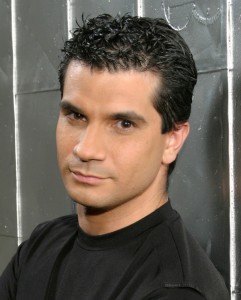
See Tommy Tallarico with Video Games Live at the New Jersey Performing Arts Center in Newark Dec. 29 and 30. (Videogameslive.com)
By JQ magazine’s Justin Tedaldi (CIR Kobe-shi, 2001-02) for Examiner.com. Visit his NY Japanese Culture page here to subscribe for free alerts on newly published stories.
Tommy Tallarico is the co-founder and CEO of Video Games Live, a touring showcase that for over five years has combined the excitement of a rock concert with the power of a symphonic orchestra featuring the music of the some of the most memorable video games in history. As the show’s lead guitarist, Tallarico is also the producer of the Video Games Live: Level 2 Blu-ray and soundtrack album, which made history last October by landing on Billboard’s Classical Crossover chart and earning a Grammy nomination for the Civilization IV song “Baba Yetu,” the first video game song ever to be nominated. I spoke with Tallarico prior to VGL’s upcoming shows this week at the New Jersey Performing Arts Center, which will feature special guest performances by legendary female Japanese composer Kinuyo Yamashita (Castlevania).
This year’s VGL tour played around the world to new countries and fans. What were the biggest similarities and differences that you noticed among the crowds and the overall reception you received?
Each country we go to is different. They love different games; they play their favorite different systems. For example, when you’re paying in Japan, World of Warcraft isn’t really popular over there, because there’s not a lot of PC gaming. But when you play in China, World of Wacraft is like the biggest thing ever of all time. [laughs] So, crowds react to different things, and it’s always my challenge to create a set list and find out what the local gamers love and are into. But when you go to places like China and Taiwan and, most specifically, Brazil, the folks down there go absolutely nuts. I mean, they lose their minds. They’re so passionate and so appreciative that something like this exists and would come to their countries. It really shows.
Were there any things that really surprised you when visiting and performing in these new countries?
When we played to over 100,000 people in Taipei in one show, and we showed up at the airport, there’s literally hundreds of people there with signs greeting us at the airport and everything. That was pretty surprising.
Tell us about VGL’s Japan debut at Tokyo International Hall last fall. Which of your idols were you most excited about meeting and working with?
I had worked with everybody before the show, but what was really special about that show was the Koji Kondo performance. Of course, Koji Kondo is the composer of Mario and Zelda. This was the very first time, believe it or not, that Koji Kondo actually performed live in Japan at a video game covert. I found that to be unbelievable, so that was very special. Having both of the women who composed the Castlevania music there on stage was also pretty special as well, but I’d have to say that providing Koji Kondo with his first ever live performance in his home country of Japan was unbelievable. He played a solo piano piece of Mario, and he went into Mario Galaxy as well. It was really incredible.
Each VGL concert is performed by a local orchestra and professional musicians. Besides special guest appearances, are there any twists depending on where you play, or do the musicians understand what you’re trying to express as easily in places like Portugal and Poland as they do in the U.S.?
I think it’s more age delineated as opposed to area. Any young person in the orchestra—and when I say young, I’m talking maybe 45 and under—any young person in the orchestra for the most part knows a lot of the material, is really happy, and they understand it; they know what’s going on. And then some of the older people in the orchestra—not all, but there’s a smaller percentage of people, no matter what country we go to—they’re a little apprehensive at first; they don’t quite understand [it], playing this music that they’ve never heard, yet thousands of young people are screaming and cheering and clapping like it’s the second coming of Elvis Presley or the Beatles or something. And so, they’re confused by the end of it: “What’s all this stuff? World of Warcraft? Sonic the Hedgehog? This isn’t Stravinsky!”
These are classically trained musicians, but once they see the reaction of the crowd and hear the music and how it is, you know, legitimate music, they have a greater understanding and appreciation for video game music. So, what starts out maybe for some of the older, traditional people as apprehension at the beginning of the day, turns into adoration by the end of it. I’ll get people coming up to me during the intermission, and they’ll say, “I’ve been playing the oboe for over 40 years, and I’ve never heard a crowd response like this. When are you guys coming back?” [laughs] So, it’s pretty cool to be able to give that to them.
As musical director, do you always do a full run-through with the orchestra prior to every night’s performance?
For sure. We also send the musicians the music months ahead of time.
When the show was performed in Brazil, it was subsidized by the government for getting young people involved in the arts. How did you arrange that, and what was the public’s reaction to that performance?
It was something that the promoters down in Brazil and myself worked on with the ministry of culture down there, and this is our fifth year back—it was our fifth year in a row down there. It’s something that I wish more governments could see the benefit of this, because we’re looking at tons of people and e-mails or people talking to us at the meet and greet, who all say things like, we brought our daughter to the show last night and we were all sitting around the breakfast table this morning and my daughter said, “Mom, I’d like to start taking violin lessons so I can learn the music to Zelda” or Kingdom Hearts or Final Fantasy or whatever, you know. So those are real stories, and, again, the Brazilian ministry of culture is fantastic to realize that and to say we want young people to be interested in the arts and culture, and what better way than to give them a presentation of something that they know and love and enjoy, and are passionate about. I wish other countries did that; I wish our country did that! [laughs]
Click here for the rest of the interview.
Justin’s Japan: An Origami Tree Grows in Rockefeller Center
By JQ magazine’s Justin Tedaldi (CIR Kobe-shi, 2001-02) for Examiner.com. Visit his NY Japanese Culture page here to subscribe for free alerts on newly published stories.
Minamoto Kitchoan, the Midtown Japanese wagashi (confectionery) shop with over 150 locations worldwide, is currently sporting a Christmas tree made up of 3,000 origami cranes, or orizuru.
According to store management, “The orizurus symbolize peace. They were made by kindergarten and elementary students in Japan and sent to New York as a tribute to the WTC Visitor Center.” This special Christmas tree was unveiled earlier this month at Minamoto Kitchoan’s Fifth Avenue store in the heart of Manhattan.
“We’ve decided to create an orizuru Christmas Tree in remembrance of tragic events of February 26, 1993 and September 11, 2001,” management explains. “Each orizuru comes with heartfelt hopes for peace.”
This sweet gesture is complemented by Minamoto Kitchoan’s own mission, which management says is to expand their business to every country in the world so that all can further experience and understand the beauty of Japanese culture through traditional Japanese wagashi, whether it’s Fukuwatshi Senbei (Japanese style vanilla cream filled cookie), the savory Benihana Ringo (apple cinnamon flavored bean jelly), or the delectable Kurizutsumi (red Bean paste and large piece of chestnut wrapped and baked in pie crust, topped with black sesame).
Click here to read the rest of the story.
Justin’s Japan: Interview with Filmmaker Amy Guggenheim on ‘When Night Turns to Day’
By JQ magazine’s Justin Tedaldi (CIR Kobe-shi, 2001-02) for Examiner.com. Visit his NY Japanese Culture page here to subscribe for free alerts on newly published stories.
New York-based writer/director/producer Amy Guggenheim is currently hard at work on When Night Turns to Day, a dramatic feature that will be shot in New York and Tokyo. A present-day romantic thriller with martial arts, sword choreography and tattoos, the film follows May, a young American female writer who gets drawn into both Japanese sword fighting (kendo) and a passionate relationship with Toshi, a young Japanese martial artist. Beyond anything she’d ever imagined, both must face secrets from their past, barely escaping with their lives.
Guggenheim herself is a third dan (degree) kendo practitioner who has competed in Tokyo, a grant recipient from the New York State Council on the Arts and the Mellon Fund, and the director of her own production company. I caught up with her to learn more about When Night Turns to Day, which begins shooting in Japan next year.
What made you interested in making a movie about kendo from an American perspective?
I got interested in making a film involving kendo after making a multimedia theater piece called Monsters and Marvels with video projection and 14 actors. It’s about the unconscious influence we have on each other from various cultures, Japanese being one of them. It’s also a way to express my vision of kendo as an American woman in 2010, interested in the “art” aspect of the “martial art.”
What is your personal history with Japan?
I’ve been involved with Japan in one way or another since the 7th grade. I was first interested in the design culture and the values of simplicity and essence, then later in kabuki, noh and butoh. In my background in theater, I was trained by Zen-influenced artists including Elaine Summers— an early intermedia artist from Judson Church (John Cage, Merce Cunningham, etc.), and then Eiko and Koma—butoh artists based in New York. When I was doing my own solo theater performance work, I started practicing kendo. For a few years I toured in Europe, Latin America and the U.S. performing my work and then practicing kendo with local dojos.
With the honor of having an Asian Cultural Council Grant in 2008, I was able to travel again to Japan (the first two trips were kendo-related—2006 participating in the first International Women’s Kendo Tournament in Tokyo), and in these last two years I’ve gone back several times and have been working with Masaru Koibuichi of Koi Pictures (our co-producer there), Setsu Asakura (art director) and others.
The dark, erotic tension of Japanese culture is my own language as well, and also the intuitive intelligence at the heart of kendo is my subject, too.
How did you get into kendo originally? Are there any films that cover the subject that inspired you with the idea or development of your film?
Bobby Troka, a kendo player and voice coach, worked with me on a solo piece of mine, suggesting I try it. I thought it was “too formal,” but once I did it, I fell in love with it and couldn’t stop! That was in 1990. There’s surprisingly few films that adequately deal with kendo, and I must say the idea developed out of my own experience and imagination and was inspired by people I met in the kendo world along the way. The way Kwaidan, directed by Masaki Kobayashi, deals with the uncertain spaces of the psyche, is evocative. Kurosawa’s Ran, Dreams and The Seven Samurai, Shindo’s Onibaba, Masumura’s Irezumi and Hong Kong martial arts films also have great inspirational material.
What are your current goals regarding the next steps in getting the film made?
We are assembling a terrific, experienced, creative team here and in Japan, and launched a mini-fundraising campaign going with Kickstarter.com that ran through November. We will next move on to preliminary test shooting and start working with sword choreographer Kataoka Noboru and actors in New York City. We are working hard to complete financing for the feature to shoot next fall, which will include investors, pre-sales and sponsors. If people are interested in donating to the project to help get us to principal photography next year, please go to our website at www.whennightturnstoday.com. You can also contact me by e-mail about donations, the project, or interest in getting involved with creative skills or production.
Click here for the rest of the interview.
Justin’s Japan: Interview with ‘Fried Chicken and Sushi’ Cartoonist/JET Alum Khalid Birdsong: Part 2 of 2
By
JQ magazine’s Justin Tedaldi (CIR Kobe-shi, 2001-02) for Examiner.com. Visit his NY Japanese Culture page here to subscribe for free alerts on newly published stories.
For Fried Chicken and Sushi, was it a conscious decision to make the lead character black?
Of course, definitely. I’m obviously an African American, and I think that I was concerned because I thought, is anybody going to want to read about this black guy going to Japan? I felt like I wanted to be true to who I am, and there’s a certain kind of way of being able to comment on race, the way that we perceive and look at people. When you go to Japan, they don’t really care who you are, you’re just a foreigner. So it’s a different kind of perception, and I really like that idea. If I keep Karl as black, I can have things that I think about that can be a whole lot easier to write, but I think it would be an interesting thing that you don’t see very often.
What kinds of crazy situations did you observe in Japan regarding Japanese people’s impression of you?
Where do I start? One thing in general is that everyone would ask me questions about America as if everyone in America does the same thing, you know? Since the Japanese people have a shared history and are all kind of the same race, they say, “Well, what is it like in America?” and “What do families eat for dinner in America?”, and it’s always so difficult to answer those questions because I have to say, well, it depends—we have a lot of cultures and so everybody’s different, and people celebrate different things. So that always would frustrate me because they want to generalize and put us all into one box, and it was hard to do. I always found that to be funny and I would start laughing when they would ask me those questions and look at me strangely: “Why are you laughing? This is a very serious question!”
What were some of the funnier or grossly inappropriate things that you experienced there that may or may not make the cut for future episodes of Fried Chicken and Sushi?
Maybe I’ll put this one in there—I don’t know if I’m the only one where this happened—but a lot of students always are asking if you have a girlfriend or something like that. But I would have several students come up to me and ask if I had a lover, like, “Do you have a lover?” And I always would say, “Uhh…well, no.” It was just the kind of English that they would use. I’m sure that you remember that there were just certain words that were always just a little different, and it would make me laugh all the time when they asked me that question, which I would always get.
Did you find yourself in the situation of having to educate your students on certain cultural things?
All the time. About America, and talking about holidays and what people do, just like the whole Christmas thing, like, “How do you celebrate Christmas?”, you know? “Christmas is not for lovers in America and we have family over.” That kind of explanation would go on and on. Certain things, even racial issues—they would learn about Martin Luther King and then they felt like there were no problems for black people in America anymore because of Martin Luther King, and everyone’s treated equally all the time in America. So there are a lot of cultural issues that I would try to discuss and help them to understand. Also, even though we have things that are different, there’s things that are the same, too. They always wanted to know what’s different, but I tried to say that things are still the same. We have families that we love and we like to celebrate and laugh and eat, and so I think that was allowed because they want to act like we’re so different and no one’s like Japanese people, but we actually do share things in common just as people.
How about race-related questions?
Just being tall and getting the students who were just shocked at how tall I was, I got that all the time: “Oh, dekai! Se ga takai!”, “you’re so tall,” and everything. They thought that I played basketball, and I really, really suck at basketball [laughs]; it’s really embarrassing. So I was leaving school one day and the kids were out playing basketball, so of course they called me over, “Oh, Birdsong-sensei, please shoot the basket.” So I thought, okay, sure—I knew I was going to miss, and they’ll see how much I suck, and it’ll be great. So of course I shoot it, and of course I make it, and they’re all like, “WOAH! You’re the greatest!” [laughs] Here we go, living up to the stereotype. Those things didn’t happen much, but they would happen on occasion, that’s for sure.
Click here for the rest of the interview.
Justin’s Japan: Interview with ‘Fried Chicken and Sushi’ Cartoonist/JET Alum Khalid Birdsong: Part 1 of 2
By JQ magazine’s Justin Tedaldi (CIR Kobe-shi, 2001-02) for Examiner.com. Visit his NY Japanese Culture page here to subscribe for free alerts on newly published stories.
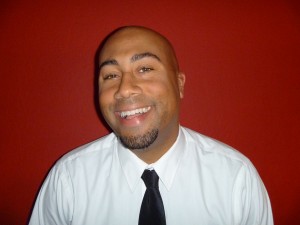
Cartoonist/JET alum Khalid Birdsong. (Courtesy of K. Birdsong)
Cartoonist and teacher Khalid Birdsong lived in Japan for two years working as an assistant English teacher on the JET Program. Last spring he launched the original webcomic Fried Chicken and Sushi, which is published twice a week and based loosely on his real-life experiences in Japan, mining the cross-cultural humor that living abroad provides.
Birdsong now lives in the San Francisco Bay Area with his wife, whom he met in Japan, and baby daughter. He plans to visit Japan next year, which he feels will inspire even more stories. I spoke with the artist about his time on JET, life as a teacher, and the future of his creation.
Where did you grow up, and what is your history with comics?
I guess I’d call Atlanta, Georgia, home—that’s where I’ve spent most of my life. I’ve traveled quite a bit. I’ve lived in several countries—in Nigeria, Germany, the Bahamas and also Japan. So I’ve kind of had that international view of things. I’ve always enjoyed reading comics no matter where I might be living. I’ve always liked to draw them, but I didn’t really read American comics until I was in middle school. Mainly, I would read Asterix and the European comics, and I’d watch a lot of animation. But I’d still draw my own comics and make up my own characters and do my own comic books and then sell them for a quarter to my friends; people always knew me as the comic book kid. So I just kept it going—even in college, I went to Howard University in Washington, D.C., and I studied graphic design and illustration there. Everything I learned, I tried to bring it back into comics and cartooning. I also did T-shirt designs, and did some freelancing for a couple of years on my own, which meant that I was freelance working, but I was also a security guard, and I was waiting tables, and all the other things that you do. And I just fell into teaching art in elementary school, and I’ve been teaching ever since. I really, really love it. It’s great.
How did you get hooked on Japanese culture?
I think like most people in high school, at least when I was in high school in the early ’90s, it was this brand new thing, when trying to look at Japanese animation when you didn’t have a translation and watching stuff you couldn’t understand with friends—and trying to read any certain comics that you could get your hands on—it was something new and exciting. I just always thought, “Boy, it must be interesting to actually live in Japan; that must be something amazing to do.” But I never thought I would really ever do it. I was just interested in the art and language. Even in college, same thing—it became more prevalent. I would enjoy more and more anime and manga, along with American comics. So I think that’s what really started me off. I was drawing comics, but I was still drawing in an American-type cartoony style. I didn’t have that quote-unquote manga style, but that’s what kind of started me into it. And then I started thinking what it would be like to live over there once I started actually teaching art.
That’s when you discovered the JET Program?
Yeah, when I was teaching art, I guess I had this feeling—I was in my mid-20s, and I just thought it would be nice. Me and my friend Jason, who’s actually the J in the Fried Chicken and Sushi comic—we both talked about going to Japan just to visit just for a couple of weeks. And so we tried to plan a trip, but we didn’t have the money and all this—didn’t quite happen. And then, he actually found out about the JET Program online, and then I looked into it, too, and we said, “We should try to apply, let’s do it.” I was already teaching [in the U.S.], so we applied, and I went through the, whatever, nine-month span of time that it takes to go through everything, and I made it in and he didn’t, and it really was not cool; it really hurt us both. But he’s a good friend, so he said, “You need to go on ahead and do it,” and so I did.
So the relationship between the two characters in the comic is based on real life.
It is. A lot of what I’m telling in the comic is based on truth in my life, but there are things that I may change or over exaggerate or add on as time goes by, as Karl’s character develops and becomes more of his own character and individual, and the same with J. So there’ll be things that I make up, but I try to keep as much of it as I can based on some of my real experiences—I think people can tell what comes from truth and real experience.
So you’re saying you didn’t have a talking tanuki spirit haunting you?
[laughs] That’s great! You know, the thing with that is, in real life I really do have a very overactive imagination. You might have known some Japanese when you went over there, but for me, I really didn’t. I listened to some CDs and studied some basic greetings and everything, so when I was there I had no idea what anyone was saying. I would just get lost in my own imagination, and there were tons of stories going on in my head and all this—I would imagine things moving around that weren’t moving around. So no, I didn’t have a tanuki, but I wanted to have something that would represent that state of craziness I was in, where I’m there but also kind of detached from it all.
Because of budget woes, there’s been talk of the Japanese government trimming or potentially cutting the JET Program altogether. As a JET alum, what are your thoughts on the value and benefits of the program from your own experiences?
I think that for me, it was great to be able to travel to another country and to get international experience as a teacher and teach English and be able to travel in a place where I never thought I would and learn a new language, so that is very valuable for me. I think that even though people argue, saying that maybe having a native speaker in the classroom is not that all that important for Japanese people, I think that it’s still great for them to have someone from another country, because I feel that Japanese people don’t really get a chance to really experience or talk to or have someone that’s not Japanese around them typically. So I think it’s a great way for them to not just learn about other cultures and what’s around them, not to mention English, but in terms of international relations I think it’s a really great program for that.
And the work you’re doing now is an extension of those ideals.
I totally agree, it’s really great. It challenges stereotypes, and I wish we could have more of it instead of cutting it down.
Click here for the rest of the interview.
Justin’s Japan: Michael Jackson Covers J-pop Classic on New Album
By JQ magazine’s Justin Tedaldi (CIR Kobe-shi, 2001-02) for Examiner.com. Visit his NY Japanese Culture page here to subscribe for free alerts on newly published stories.
According to Billboard, Yellow Magic Orchestra’s 1979 electropop smash “Behind the Mask” will appear on Michael, the first posthumous album from the late recording megastar Michael Jackson.
Penned by YMO’s Oscar-winning composer Ryuichi Sakamoto with Chris Mosdell, “Behind the Mask” was first brought to Jackson’s attention by legendary producer Quincy Jones during the Thriller sessions in the early ’80s. The King of Pop cut the Japanese group’s song, adding an extra melody line and additional lyrics. Legal battles barred it from making the album, and the tune languished in the vaults until now.
Click here to read the rest of the article.
Justin’s Japan: Carnegie Hall to Kick Off JapanNYC 2010 Concert Week
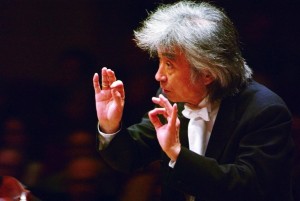
- Maestro Seiji Ozawa, artistic director of Carnegie Hall’s JapanNYC festival. (Mark Corke/New York Observer)
By JQ magazine’s Justin Tedaldi (CIR Kobe-shi, 2001-02) for Examiner.com. Visit his NY Japanese Culture page here to subscribe for free alerts on newly published stories.
Starting this Saturday, Carnegie Hall’s JapanNYC festival will unveil its first citywide series of musical performances. Led by artistic director Seiji Ozawa, who is best known for his record-setting 29-year career as music director of the Boston Symphony Orchestra, the festival’s musical highlights next week will see Maestro Ozawa helming rare overseas concerts by the Saito Kinen Orchestra with conductor Tatsuya Shimono, pianist Mitsuko Uchida and others, plus tributes to the legendary late composer Tōru Takemitsu, considered by many to be Japan’s greatest composer.
Additionally, as part of the Works & Process series at the Guggenheim Museum, a series of performances of Prokofiev’s Peter and the Wolf—performed by the Juilliard Ensemble and George Manahan with visual art by Rei Sato of Kaikai Kiki and narration by fashion designer Isaac Mizrahi—will surely delight music fans of all ages.
The performances follow other city exhibitions and ongoing events under the JapanNYC banner that run through next year, including Yoshitomo Nara: Nobody’s Fool at Asia Society, The Sound of One Hand: Paintings and Calligraphy by Zen Master Hakuin at Japan Society, and On Becoming an Artist: Isamu Noguchi and His Contemporaries, 1922-1960 at The Noguchi Museum in Queens.
JapanNYC returns in March and April 2011 with three weeks of events across New York City, including performances of classical, jazz and traditional Japanese music; contemporary theatre and visual art; noh theater and kyogen plays; modern dance; film; taiko drumming and more.
Click here for the complete performance schedule.
Justin’s Japan: Interview with author Hideo Dan on ‘Lipstick Building’

- Meet ‘Lipstick Building’ author Hideo Dan at Manhattan’s Kinokuniya Bookstore Saturday, Dec. 11. (Courtesy of Hideo Dan)
By JQ magazine’s Justin Tedaldi (CIR Kobe-shi, 2001-02) for Examiner.com. Visit his NY Japanese Culture page here to subscribe for free alerts on newly published stories.
Hideo Dan is a vice president and attorney at law of a New Jersey-based healthcare company who is now a debut author. Published by NY Seikatsu Press, Lipstick Building is a fast-paced suspense novel based on the author’s 30-year real-life experience in New York as a shosha (trading company) man and a corporate attorney with an international law firm.
Kenji Kadota, who works for a Japanese trading company in New York, is introduced at a party to Suzanna, a beautiful businesswoman from Peru. She proposes a big business opportunity to Kenji—an attractive prospect of exporting Japanese machinery to a major Peruvian construction company. Is this a great business chance, or is something ominous ahead? The story develops quickly into intrigue and adventure, with Kenji and Suzanna crisscrossing through South America and Europe, providing readers entertainment and thrills to the end.
The author will be the subject of a special talk and book signing event Saturday, Dec. 11 at Manhattan’s Kinokuniya Bookstore. I caught up with him to learn more.
How did you come to the U.S.?
The first time I came to the U.S. was in 1971, when I attended Indiana University for a year to study journalism. I could not land a job in journalism, so I started to work for Nissho-Iwai, a trading company, a.k.a. shosha, upon graduation from Osaka University with a law degree. In 1979, Nissho-Iwai sent me to its New York subsidiary as legal manager.
Lipstick Building is based on your three decades of experience at a Japanese trading company. How long did it take to write this book?
Actually, I was with the trading company for 14 years, seven years each for Japan and New York. After that, I left the company and joined a law firm in New York, having had passed the New York Bar Exam while I was with Nissho-iwai American Corporation. After almost nine years with the law firm, I joined Eisai, a Tokyo-based pharmaceutical company, as general counsel for its U.S. operations.
It took nearly one and a half years to write this book. I was able to do it since I was asked to manage Eisai USA Foundation, a charitable organization on the part-time basis, two years ago.
What is your personal experience with Peru? Are there any other international experiences that helped your writing?
Unfortunately, I have never been to Peru—I was planning to do so this year but because of the flood at Machu Picchu, my trip was cancelled. So I did lots of research on Peru on Google and at a library. I had met a very attractive Peruvian student when I was attending Indiana University, which gave me some inspirations for this book. In fact, Europe (Spain and Switzerland) plays a much larger part in this story than Peru. I have been to Spain and Switzerland on business and pleasure on numerous occasions and have been attracted by culture and scenery in those countries. Especially in Spain—I was fascinated by flamenco and its dancers. Flamenco is an important element in this novel.
What are the big differences between working at a trading company in Japan versus the U.S.? Did these differences shape the story?
At the trading company in New York and also at the law firm where I worked, naturally I interacted heavily with non-Japanese people, colleagues and clients, which constantly reminded me of cultural and linguistic differences between Japan, the U.S. and many other different cultures. As someone who is very curious about anything, I enjoyed learning those differences on daily basis. At the same time, I got impressed with striking similarities at a deep human level. My book certainly reflects those experiences and observations.
Click here for the rest of the interview.
Justin’s Japan: Interview with ‘Tonoharu’ Cartoonist/JET Alum Lars Martinson
By JQ magazine’s Justin Tedaldi (CIR Kobe-shi, 2001-02) for Examiner.com. Visit his NY Japanese Culture page here to subscribe for free alerts on newly published stories.
Minnesota-based cartoonist Lars Martinson went to Japan in 2003 to teach English on the JET Program, an exchange initiative sponsored by the Japanese government. During his three-year stay in rural Fukuoka, he was inspired to break ground on an ambitiously stylized four-part graphic novel named Tonoharu (Pliant Press) based on the trials and tribulations of living in Japan. Part Two was released in November, and I caught up with the artist to discuss the series so far and Japanese life through an expat’s eyes.
How would you describe the differences in Tonoharu: Part Two compared to the previous book? Did you do anything different in terms of storytelling or approach?
With each volume I’ve tried to explore different facets of living abroad. The first book focuses on the sense of loneliness and isolation that occurs after the “honeymoon period” of cultural acclimation ends. The second book deals with the relationships that develop, both with members of the native population and with other expats.
My approach to storytelling has gotten more deliberate as I’ve gone along. For Tonoharu: Part One, I started by writing “Page 1, Scene 1” at the top of a piece of paper and launching into a detailed script before I had a clear sense of what direction I wanted the story to go in. Diving straight into minutiae like that is like working on the interior design of a house that hasn’t been built yet; you should know how big the windows are before you pick out the curtains. So for Part Two—and now Part Three—I’ve given much more thought to the structure of the story, and made sure I was happy with the big picture before I got too wrapped up in details and nuance.
Tell us about your experiences on the JET Program. What made you choose to apply, and what was your overall take on the three years that you were there for?
When I was 16, I lived with a host family in Nagoya for a summer vacation exchange. The experience inspired a lifelong interest in international travel. I’d go on to live in Thailand and Norway for a year apiece as an exchange student, and visit a dozen or so other countries as a tourist. After I graduated from college, I wanted to try working abroad, and also wanted to return to Japan. A friend of mine introduced me to the JET Program, and I knew immediately that it was right for me. And sure enough, my three years in the JET Program were among the best I’ve ever had.
All JET participants hit high and low points while in Japan. What were some of yours?
My elementary school classes were among the most satisfying experiences. I planned all the lessons pretty much single-handedly, so once I got the hang of it, it was gratifying to see how excited the kids were about learning English, and how much they retained.
One of the more frustrating aspects of the experience, at least in the beginning, was the language barrier. It’s hard to form meaningful friendships when you can’t—y’know—talk to people. So it was always sad when I wanted to befriend someone and they clearly wanted to befriend me, but the logistics of not being able to communicate effectively got in the way.
Last summer, it was announced that the JET Program is facing sweeping budget cuts that may endanger its future. What’s your take on the value of the program in today in Japan and in the participants’ home countries?
I suppose with the economy being what it is, some cuts are probably inevitable. But I really hope they don’t gut the JET Program. My life has been enhanced beyond measure by having the opportunity to interact with foreign cultures, and I hope Japanese students will continue to be given the same opportunity. It’s hard to quantify the benefits of the JET Program, but that doesn’t really make them any less real or important.
What kind of feedback on the books have your received from JETs and those associated with the Japanese community?
I’ve tried to make the book accessible to readers regardless of their background, but it goes without saying that those who are familiar with Japan or the JET Program are able to appreciate it on a different level. JETs tend to pick up on all these little details in the books that other readers breeze pass without notice. I remember a JET alum commenting on a scene in Part One where the main character wears a fancy suit to his first day on the job, but since it’s summer vacation everyone else in the teacher’s room is wearing ratty gym clothes. It’s little things like that that you’d only consciously notice if you’d been in that situation yourself.
Click here for the rest of the interview.
Justin’s Japan: Interview with ‘Hiroshima in the Morning’ Author Rahna Reiko Rizzuto
By JQ magazine’s Justin Tedaldi (CIR Kobe-shi, 2001-02) for Examiner.com. Visit his NY Japanese Culture page here to subscribe for free alerts on newly published stories.
In June 2001, award-winning Japanese American author Rahna Reiko Rizzuto went to Hiroshima on a six-month fellowship to interview the hibakusha, or remaining survivors of the atomic bomb. Three months later, the September 11 attacks on the U.S. changed everything, from the recollections of the survivors to Rizzuto’s own relationship with her family back in America, including her husband and two young sons in New York.
The result was Hiroshima in the Morning, a memoir released last fall in which the author weaves these threads into a deeply personal story of awakening about how we choose our identities, how we view history, and how we use memory as a story we tell ourselves to explain who we are. I caught up with Rizzuto to discuss her emotional journey and impressions of Japan.
What was the most interesting thing about talking with the atomic bomb survivors in Hiroshima?
I went to Hiroshima initially because I knew so little—almost nothing—about the atomic bomb and its effects. I arrived more than 55 years after the bombing, so I expected memories to be a little hazy. When I first arrived, I met people who were very committed to telling their stories in the interest of peace. They wanted to testify about the power of the atomic bomb and the devastation of war in general in hopes that there would be no more war. That would make their sacrifices worth it.
I was there to write a novel, though, not a factual piece, so what I was looking for was textures and details about what it was like to live in those times, and how one survived war. So what I was getting was not exactly what I was looking for. Their stories were very complete and rehearsed. What happened then, though, was after three months of listening to these testimonies, the September 11th attacks happened within sight of my Brooklyn home. The world changed. And so did their stories.
In hindsight, how different did the interview project turn out because of 9/11?
I don’t think anyone can underestimate the effects of those attacks. They reverberated immediately, all the way to Japan, and we all suddenly felt the world was not safe. We were not safe. And if we weren’t safe, there was no peace, and if there was no peace, the hibakusha realized, then their sacrifice was for nothing.
Almost immediately, this destabilization affected their stories. They began to feel more, and to remember more. Moments and people they had blocked out came back to them. They remembered heat, and color and sound. And they remembered what it felt like to go back to their homes and find their mothers’ bones.
Which of the testimonials affected you the most? Why?
The most unbearable stories were often about children. Children who died; children who tried to save their brothers or parents; children who cremated their parents, at age six, because that was what their parents would have wanted. In the months after 9/11, though, something happened which was very moving and powerful. A number of people came to me to tell their stories. Before then, I had been finding my own interviewees with the help of my translators, but after September 11th, I found out that many people actually knew I was there, listening, and they sought me out because they needed a witness. They needed a safe place to relive, and purge, their memories. And then, it wasn’t just the sad moments. It was also the happy memories of life before, and their family members before. They needed to share those, too, and they gave them to me so their loved ones would not fade away.
Click here for the rest of the interview.
Justin’s Japan: Interview with Colin Quinn on Broadway’s ‘Long Story Short’
By JQ magazine’s Justin Tedaldi (CIR Kobe-shi, 2001-02) for Examiner.com. Visit his NY Japanese Culture page here to subscribe for free alerts on newly published stories.
Give Colin Quinn 75 minutes, and he’ll give you a hilarious history of the world’s greatest empires. Written and performed by the Brooklyn-born comic (Tough Crowd, Saturday Night Live) and directed by Jerry Seinfeld, Colin Quinn: Long Story Short premiered earlier this month on Broadway to rave reviews from the New York Times, Variety and Entertainment Weekly. I spoke with stand-up’s Renaissance man about the show and his admiration for today’s Japan.
Putting this show together had to have been an educational experience on so many levels. What did you learn?
It was more like thinking about things that I sort of knew more than learning. It’s like realizing how it really is amazing that we’ve never changed at all in terms of how we behave as people.
How about for the sense of stagecraft in your act?
Definitely the sense of movement; the sense of being in different places and trying to, you know, keep it about movement—a lot more movement—which I definitely think is important. In stand-up you don’t think in those terms. Thinking in terms of acting as different characters, you do it a little bit, but not really.
Your show covers China, but Japan is totally absent. Do you have any plans to inject more of it in future shows?
It is kind of a disgrace to leave out imperial Japan; they were a giant empire, let’s face it. I had this whole thing about the Dutch and Japan and England all being these little countries that ran things. Maybe I’m going to try to find a way to incorporate that stuff in. I used to have a line about how Japan was like the little guy that used to intimidate the big guy China—China was kind of the mama’s boy at that time. So maybe there’s a way that I can incorporate that back in, but we cut it out for time.
Where have you traveled to in the world?
I’ve been to Japan, I’ve been to China, I’ve been to Africa, I’ve been to the Middle East, I’ve been to Europe a little bit. I’ve never been to South America.
What was your time in Japan like?
I was just doing shows for the USO, so I was at all the military bases. I spent two weeks in Japan, but I went everywhere except Tokyo. [laughs]
What other cities and places did you visit?
I was in Nagasaki and Hiroshima and all that stuff, just wherever the military bases were.
When was that?
About six years ago. I’ll tell you the truth, it was so beautiful to travel—we traveled by bus most of the places, and just passing the houses, everybody’s got these beautiful roofs. It’s like, wow, the people really just care, you know?
Click here for the rest of the interview.
Justin’s Japan: ‘Summer Wars’ Anime Aims for Oscar (Film Review)
By JQ magazine’s Justin Tedaldi (CIR Kobe-shi, 2001-02) for Examiner.com. Visit his NY Japanese Culture page here to subscribe for free alerts on newly published stories.
The opening scene of Mamoru Hosoda’s animated film Summer Wars transports us to the virtual world of OZ, a place where hundreds of millions of users chat, shop and play via customized avatars in a breathtakingly trippy space that owes much to contemporary Japanese pop artist Takashi Murakami and Mamoru Oshii’s Ghost in the Shell movies. But it’s in rural Nagano where most of Summer Wars occurs, and this setting gives it a heart in a world that’s becoming increasingly addicted to online social networks and mobile devices.
The film enjoyed a sold-out reception of its English language premiere at Asia Society yesterday as part of distributor GKIDS’ annual New York International Children’s Film Festival. Fueled by Internet buzz and rapturous word of mouth upon its initial release in Japan last year, the film won a clutch of awards and is an official entry for Best Animated Feature at the 2011 Academy Awards.
The plot: teenage OZ moderator Kenji (voiced by Michael Sinterniklaas) agrees to a “job” escorting his popular schoolmate Natsuki (Brina Palencia) to her great-grandmother’s upcoming 90th birthday celebration at the family’s enormous estate in Ueda. The catch: he’s asked by his secret crush to pose as her fiancé, which hits complications as her crazed extended family enters the picture. To make matters worse, Kenji unwittingly triggers a malicious AI program called Love Machine that threatens not just the existence of OZ, but the rest of the real world with its interdependence on technology. It’s up to the boy—a girl-phobic math prodigy—to gain new confidence in himself in order to right OZ and win his dream girl’s heart.
Click here for the rest of the review.

